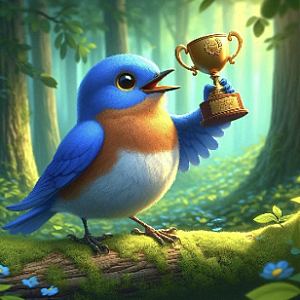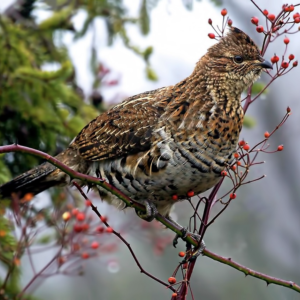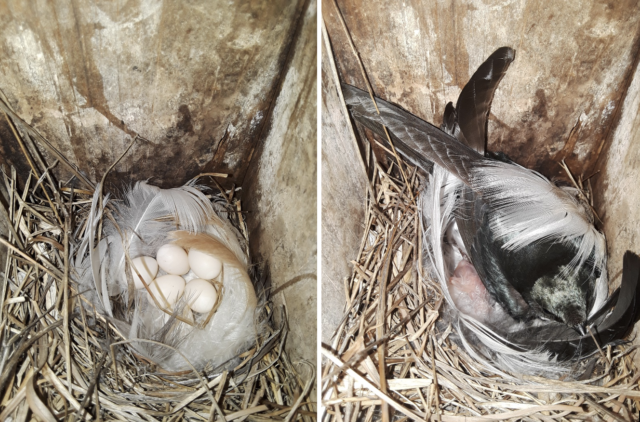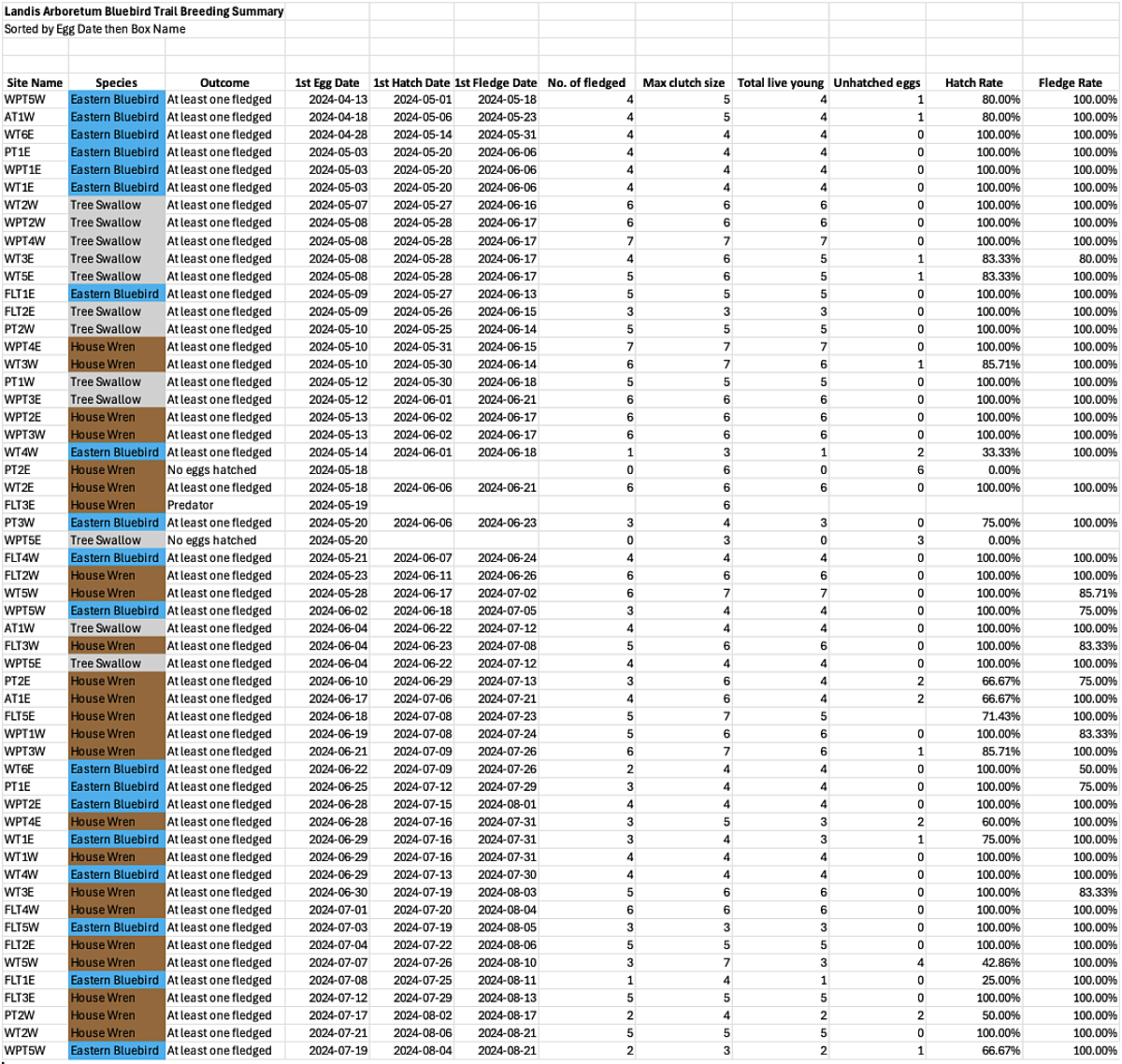September, 2024
News & Muse from the Bluebird Trail – Bluebird Blog Autumn 2024 Issue
By Shayne Mitchell
Please submit any comments, questions, or suggestions to birding@landisarboretum.org.
News from the Trail
Trail monitoring report
All nest monitoring is conducted in accordance with The Cornell Lab of Ornithology’s Nestwatch Nest Monitoring Manual. All monitoring data is entered into the Nestwatch database, and an end-of-year summary is submitted to the New York State Bluebird Society.
If you’d like to follow along with our Bluebird Trail Map, you can open a map in a new tab.
Routine nest box monitoring began on March 12 and ended August 23. As expected, the three species of birds using our boxes were Eastern Bluebirds, Tree Swallows and House Wrens. A few early birds showed interest in the boxes in March and April, but it wasn’t until May and June that they really got busy. New nesting activity declined sharply during the second half of July and the final batch of fledglings left the boxes in late August. Overall, it was a great year for nesting success on the trail.
Off-season maintenance has already started. Most nest boxes have been thoroughly cleaned. Between now and springtime there are some boxes that require repairs, and there is brush to cut, but much less than last year. Undoubtedly, some posts will require straightening in springtime after the ground thaws.
Boxes that did not host nests this year will get an off-season evaluation to see if modifications might improve their bird appeal. A box might not be used for several reasons, including highly territorial birds nesting nearby, mouse or wasp nests, or an issue with the box, e.g., location, condition, design, compass facing. Also, boxes that hosted lots of wrens may be moved during the off season to be further away from the tree line or brushy areas, where possible, to try to favor more bluebirds and swallows.
Looking ahead to 2025, the Setting Up a Bluebird Nest Box class and Bluebird Trail Walk field trip will likely be repeated as they were both well attended this year. If there are other classes or field trips you’d like to see, please email us your ideas. Also, we hope to repeat the Bluebird Lottery (more information below).
2024 Summary statistics:
Number of Nest Boxes = 40 (20 locations with a pair of boxes at each)
Total Nest Box Visits = 1000+
Fledglings:
Eastern Bluebird = 62
Tree Swallow = 55
House Wren = 109
Other = 0
Total (sum of all species):
Eggs Laid = 285
Young Hatched = 236
Fledglings = 226
More detailed nesting information can be found in the table at the end of this edition of the blog.
2024 Nest Box Award Winners:

First – The first egg of the year was laid on April 13 in Box WPT5W, Eastern Bluebird.
Last – The last fledgling departed from Box WPT5W on August 21, Eastern Bluebird.
Most – The box with the most fledglings was WPT3W, 12 House Wrens.
Least – Also known as Participation Trophy Winners. Boxes FLT1W, FLT4E, PT3E, WT4E, WT6W had zero nesting attempts for the year. “Sorry you didn’t host any birds this year but thanks for trying your best ... did you really try your best?” Maybe they did. In every case their paired box hosted bluebirds, so I suspect that highly territorial bluebird neighbors prevented use of these boxes, i.e., it’s probably not their fault they were empty all year. Even so, we’ll give them an extra evaluation during the off season .
Ruler of the Roost – More House Wrens fledged than any other species.
Most Unwanted Visitors – Paper wasps nesting in PT3E. I removed their nest for seven weeks and then gave up and let them stay. I could have tried applying some soap to the roof of the box to deter them but kept forgetting to bring it.
People’s Choice Award – Location WPT4 received the most Bluebird Lottery guesses. See Nestbox Spotlight below.
Bluebirdiest Box – WPT5W hosted 3 broods and 9 fledglings. More than any other box this year. The following picture was taken August 6.
Bluebird Lottery summary report

The odds of winning the grand prize in the New York Lottery Mega Millions is approximately 0.00000033%. The odds of winning a grand prize in our Bluebird Lottery was 16%. Therefore, the chance of getting a return on your investment was 48.5 million times higher if you played our Bluebird Lottery … except that no investment was involved since our lottery was free to play!
Did I mention that Landis held a free lottery this year? Lottery participants guessed which nest box locations would produce (fledge) bluebirds this year. Seventy-four participants submitted guesses by the April 15 deadline. Every location received at least one guess. Eight locations out of 20 fledged bluebirds by the June 15 lottery end date resulting in 22 participants (30%) winning free Landis Arboretum memberships. Each of the 22 winners was then entered in our grand prize drawing and 12 of them won grand prizes, which included two $50 cash prizes, two nest boxes, a bird feeder, $20 credit for our plant sale, free attendance on one of our field trips, and five subscriptions to The Mountain Eagle/Schoharie News. The total value of all prizes was $1200. Thanks again to the businesses that donated: The Apple Barrel (Schoharie), Wild Birds Unlimited (Saratoga), Wildbird Junction (Delmar), and The Mountain Eagle/Schoharie News. Whether you enjoyed the lottery this year or missed out on the fun, stay tuned. We hope to do it again next year.
Winning locations: AT1, FLT1, PT1, WPT1, WPT5, WT1, WT4 and WT6.
Featured Bird

Ruffed Grouse – The Ruffed Grouse is the most widely distributed native game bird in North America. They are a little larger than pigeons. The name “Ruffed” is based on their long neck feathers that are most obvious when a male is “displaying” while courting a female or defending territory. Males also “drum” to proclaim ownership of territory. This thumping sound is made by beating their wings against the air to create a vacuum. Drumming can occur year-round but is most common in the spring. Ruffed Grouse are often incorrectly referred to as partridges.
They do not migrate and live their lives in a wooded area of a few acres, preferring young forests. They nest and spend most of their time on the ground and rarely fly far. Their population in New York has declined by 75% since the 1960s due in part to the widespread maturing of forests. Their diet is mostly composed of leaves, buds, fruits, and insects. They possess unusually large crops that allow them to consume enough food for an entire day in minutes, unlike many other birds that must forage continually throughout the day. I frequently observed Ruffed Grouse along the Pioneer Trail this year.
You can learn much more about Ruffed Grouse by visiting All About Birds.
Muse for the Trail
Good-by and Keep Cold
By Robert Frost
This saying good-by on the edge of the dark
And the cold to an orchard so young in the bark
Reminds me of all that can happen to harm
An orchard away at the end of the farm
All winter, cut off by a hill from the house.
I don't want it girdled by rabbit and mouse,
I don't want it dreamily nibbled for browse
By deer, and I don't want it budded by grouse.
(If certain it wouldn't be idle to call
I'd summon grouse, rabbit, and deer to the wall
And warn them away with a stick for a gun.)
I don't want it stirred by the heat of the sun.
(We made it secure against being, I hope,
By setting it out on a northerly slope.)
No orchard's the worse for the wintriest storm;
But one thing about it, it mustn't get warm.
"How often already you've had to be told,
Keep cold, young orchard. Good-by and keep cold.
Dread fifty above more than fifty below."
I have to be gone for a season or so.
My business awhile is with different trees,
Less carefully nourished, less fruitful than these,
And such as is done to their wood with an ax—
Maples and birches and tamaracks.
I wish I could promise to lie in the night
And think of an orchard's arboreal plight
When slowly (and nobody comes with a light)
Its heart sinks lower under the sod.
But something has to be left to God.
Random Facts and Helpful Hints
The fall migration has started! August through October is the peak migration period, though some species, especially those that travel shorter distances, don’t start migrating until later. Some species are only seen here when they are passing through on their migration. This is a great time to go birding. Visit https://www.sierraclub.org/sierra/fall-birding-tipsto learn more about fall migration.
Quarterly Boggler
Name at least one way that Ruffed Grouse have evolved or adapted to survive the winter.
(see answer at bottom of page.)
Nestbox Spotlight
Location WPT4 won this year’s People’s Choice Award by receiving 15% of the Bluebird Lottery guesses, which was twice as many as the second-place vote-getter. While no bluebirds nested there this year, the two nest boxes at this location did host Tree Swallows and House Wrens.

Boggler Answer
Ruffed Grouse have evolved or adapted to survive the winter in a number of ways:
Ruffed Grouse create igloos – They sometimes dive headfirst into deep, fluffy snow, burying their entire body. Their body heat creates an open space under the surface of the snow, making a bird-sized igloo that maintains a steady temperature of 20° F or more. This also helps them hide from predators.
Ruffed Grouse sprout snowshoes - Grouse have evolved to grow special scales that grow laterally from their toes as winter approaches. These scales, called pectinations, increase the surface area of their feet allowing them to more easily walk on snow. Pectinations also help them to grip icy branches. As winter is coming to an end these scales begin to wear off.
Ruffed Grouse grow additional feathers - Insulating feathers thicken around their nostrils and legs. These feathers help warm the air that they breathe in and reduce heat loss.
Landis Arboretum Bluebird Trail Breeding Summary

